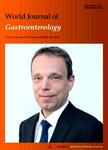Macrophage secretory products induce an inflammatory phenotype in hepatocytes
Macrophage secretory products induce an inflammatory phenotype in hepatocytes作者机构:Centre for Liver Disease ResearchSchool of MedicineThe University of QueenslandPrincess Alexandra HospitalBrisbane 4102QueenslandAustralia Department of Gastroenterology and HepatologyPrincess Alexandra HospitalBrisbane 4102QueenslandAustralia Institute for Molecular Bioscience and Australian Infectious Diseases Research CentreThe University of QueenslandBrisbane 4072QueenslandAustralia Diamantina InstituteThe University of QueenslandBrisbane 4102QueenslandAustralia
出 版 物:《World Journal of Gastroenterology》 (世界胃肠病学杂志(英文版))
年 卷 期:2012年第18卷第15期
页 面:1732-1744页
核心收录:
学科分类:1002[医学-临床医学] 100201[医学-内科学(含:心血管病、血液病、呼吸系病、消化系病、内分泌与代谢病、肾病、风湿病、传染病)] 10[医学]
基 金:Supported by The National Health and Medical Research Council of Australia,No.APP1003108 the Queensland Government’s Smart State Health and Medical Research Fund The Princess Alexandra Hospital Research and Development Foundation The Sasakawa Foundation(Royal Children’s Hospital,Brisbane) an Unrestricted Education Grant from MSD(to Powell EE) a Lions Medical Research Foundation Senior Research Fellowship(to Thomas GP)
主 题:Macrophages Hepatic fibrosis Lipocalin-2 Transforming growth factor-β1 Matrix metalloproteinase-9
摘 要:AIM:To investigate the influence of macrophages on hepatocyte phenotype and ***:Macrophages were differentiated from THP-1 monocytes via phorbol myristate acetate stimulation and the effects of monocyte or macrophageconditioned medium on HepG2 mRNA and protein expression *** in vivo relevance of these findings was confirmed using liver biopsies from 147 patients with hepatitis C virus(HCV)***:Conditioned media from macrophages,but not monocytes,induced a transient morphological change in hepatocytes associated with upregulation of vimentin(7.8±2.5-fold,P=0.045)and transforming growth factor(TGF)-β1(2.6±0.2-fold,P0.001)and downregulation of epithelial cadherin(1.7±0.02-fold,P=0.017)mRNA *** analysis revealed significant upregulation of lipocalin-2(17-fold,P 0.001)and pathways associated with inflammation,and substantial downregulation of pathways related to hepatocyte *** patients with chronic HCV,realtime polymerase chain reaction and immunohistochemistry confirmed an increase in lipocalin-2 mRNA(F0 1.0 ±0.3,F1 2.2±0.2,F2 3.0±9.3,F3/4 4.0±0.8,P= 0.003)and protein expression(F1 1.0±0.5,F2 1.3± 0.4,F3/4 3.6±0.4,P=0.014)with increasing liver *** performance liquid chromatography-tandem mass spectrometry analysis identified elevated levels of matrix metalloproteinase(MMP)-9 in macrophageconditioned medium,and a chemical inhibitor of MMP-9 attenuated the change in morphology and mRNA expression of TGF-β1(2.9±0.2 vs 1.04±0.1,P0.001) in macrophage-conditioned media treated HepG2 *** patients with chronic HCV infection,hepatic mRNA expression of CD163(F0 1.0±0.2,F1/2 2.8±0.3,F3/4 5.3±1.0,P=0.001)and MMP-9(F0 1.0±0.4,F1/2 2.8±0.3,F3/4 4.1±0.8,P=0.011)was significantly associated with increasing stage of ***:Secreted macrophage products alter the phenotype and function of hepatocytes,with increased expression of inflammatory mediators,suggesting that hepatocytes actively participat



